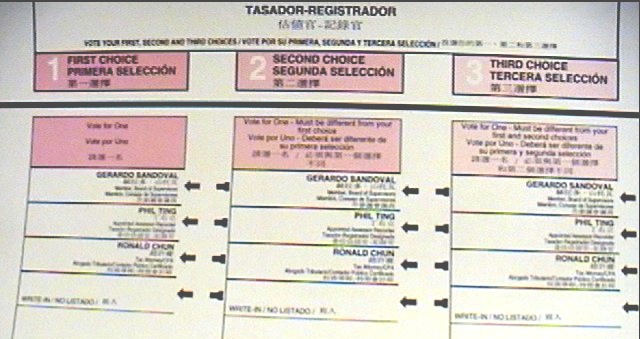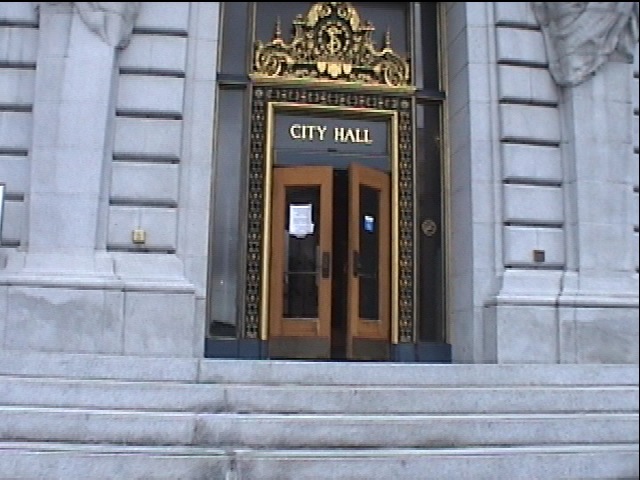SAN FRANCISCO SAVES OVER $1 MILLION USING RANKED CHOICE VOTING
Burlington elects mayor using Instant Runoff Vote
[Note: since I wrote this page, San Francisco had a third successful Instant Runoff election on November 7, 2006. Read more here.]
The City of San Francisco, California enjoyed its second election using Ranked Choice Voting (RCV) on November 8, 2005. Three city offices were decided: treasurer, attorney, and assessor/recorder.
Although much of the election day focus was on ballot measures such as those proposed by Governor Arnold Schwarzenegger, the city was able to elect majority winners in the three city offices without having a primary or a runoff.
Prior to 2004, San Francisco would have a December runoff for any office where the top vote getter in November had less than 50% of the votes. By eliminating the runoff, San Francisco saved $1.6 million, and while there were some additional education and administrative costs with the new procedure, the net benefit to the San Francisco budget exceeded $1,000,000.
RCV is the equivalent of Instant Runoff Voting (IRV). Voters rank their choices. If a candidate receives more than 50% of the first choices, he is elected. For example, Jose Cisneros received 61.8% of the first choice votes against three opponents. Therefore, he was elected Treasurer without any reference to the second or third choices of the voters. Dennis Herrera was unopposed in the City Attorney race.
But in the assessor/recorder race, Phil Ting received 47.2% of the first choices, while Gerardo Sandoval received 36.1% and Ronald Chun 16.7%. Under the old process, San Francisco would be required to hold a December runoff between Ting and Sandoval. Since this would be the only race on the ballot and a somewhat obscure one at that, turnout in December would be quite low. It is likely that Ting would receive fewer votes in December than in November, even if he picked up votes from Chun's supporters.
Using RCV, Ronald Chun was eliminated. The second choices of voters who voted for Chun were reviewed. Of his 33,294 supporters, 15,991 made Ting their second choice, while 7,411 made Sandoval their second choice. Another 9,910 made no second choice. Consequently, Ting won with 58.1%.

In Minnesota, we could apply this process to city, school board, and other elections, eliminating the primary and saving tax dollars, while providing a democratic result. Bills to allow local governments to use this process need your support. Contact your legislator to move this needed legislation forward.
More on San Francisco from their Department of Elections
Travelogue video of my trip to San Francisco to observe the ranked choice voting in November, 2005. The event was sponsored by FairVote. We attended pollworker training; met with ranked vote activists and political leaders who were involved in its passage; heard discussions by members of the Elections Commission and academics who studied last year's election; met with city election officials and toured their facility; went precinct to precinct to talk to voters and pollworkers; and had fun in the city. The video only touches a little of all that, and to compress it, a lot of the quality is lost. But you may find it interesting and amusing. Seven minutes long.
Windows Media 10MB (longer download) or Flash Video (faster, smaller)

